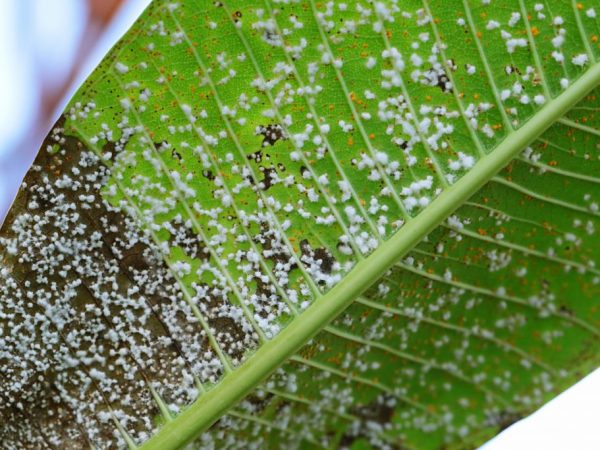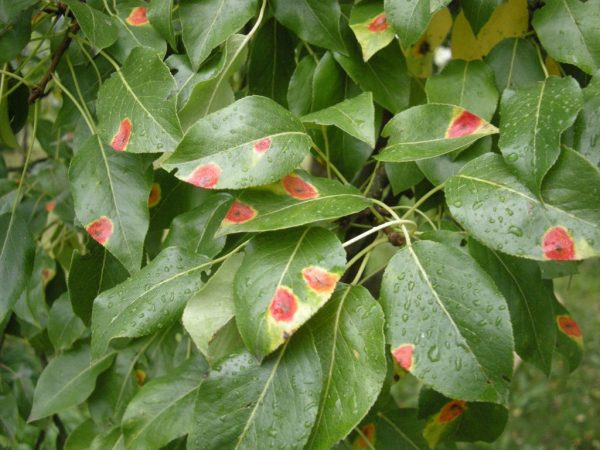How to deal with pear gall mites
Pear gall mite is one of the most dangerous and difficult to remove pests. They are common in all regions where pears are grown. In addition to pears, they damage other crops from the Rozanov family: quince, apple, mountain ash and cotoneaster. Gall mites negatively affect the development of the tree, as well as its fruitfulness.

How to deal with pear gall mites
Reasons for the appearance
The main danger of these beetles is that they independently move from one tree to another. Their appearance and reproduction is provoked by the following factors:
- a very large amount of phosphate fertilizers;
- irregular pruning of the crown;
- the introduction of an excessive amount of stimulating drugs for trees.
Sometimes drugs that are used to control other pests do not pose a danger to the pear gall mite. They only destroy its direct enemies - dragonflies, ground beetles, etc.
Signs
Due to the fact that these pests are very small, they are difficult to recognize. The pear gall mite resembles white or light pink worms with four legs that are closer to the head and help them move.
First, small wavy blisters (galls) form on the leaves of pears, ranging in size from 0.18 to 3 mm. Under them there may be adult worms or previously laid eggs of the female. At first, these bubbles merge with the color of the leaves, then they darken and turn black. As a result, the parasites dry out the leaves very much and they fall off.
Beetles can also hide under the bark of a tree, especially in winter. They multiply there and suck out the cell sap from the buds of the tree. This causes the kidneys to become very small or not open at all.
Ways to fight
The means of combating pear mites are in the correct and timely care of the tree. If damaged leaves are noticed, they must be removed immediately and burned. Branches that are heavily infested should also be pruned.
There are also more radical measures to combat pear mites - chemical treatment and folk methods. These spraying methods should be done in the morning or evening. The best weather is dry, sunny, but the procedure can be carried out even in cloudy weather. Because the sun reduces the effectiveness of the fight against parasites and droplets of solutions burn the leaves.

Prevention is mandatory
Chemicals
This method is used more often in the spring, when the gall mite has been on the pear all winter. Before opening the leaves, the pear is treated with Inta Vir. You need 1 tablet for 10 liters of water.
Also, such drugs are used:
- "Akreks". It is a powerful chemical. It can be used against these beetles only 2 times a year, 20 days before harvest.
- "Nitrafen". It is a dark brown complex effect paste that dissolves perfectly in water. It is applied by drip irrigation method.
- Vermitek. A chemical that affects the multiplication of various pests. Advantage - resistant to rain washout.
Processing should be carried out no more than 1 time in 2 weeks.Don't forget about safety measures. All actions must be performed with gloves, a mask on the face and the most closed clothing. It is imperative to change the preparations for treating wood so that the parasite does not develop immunity to them.
Pest injection has also recently become popular. The agent enters the sap flow and causes irritation of the mucous membrane in pests. This method is distinguished by the effectiveness of delivering drugs to different parts of the tree.
Traditional methods
Dandelion infusion is a very good remedy. You need to take 1kg of fresh dandelion leaves and pour 3 liters of water over them. Leave to infuse for 3 days. Before processing the pear, add 100 ml of liquid soap to the strained solution.
You can use potato infusion. You need to take 1 kg of fresh tops, or 500 g dry. Grind it and pour 10 liters of water. You need to insist this solution for 4 hours, then strain. At the end, add 1 tbsp. l. soap and use this product within 24 hours.
Another irreplaceable remedy is an infusion of marigolds. Cooking method:
- You will need 100 g of flowers.
- Boil them with 1 liter of water.
- Insist the remedy for 5 days, then add another 1 liter to it. water.
- You can start using it.
Prophylaxis
In order not to initially start the fight against the tick, you need to choose a healthy seedling. It should be carefully examined for pests. Because an infected tree poses a threat to other horticultural crops.
Pear gall mite may appear due to excessive use of phosphorus to fertilize the pear tree, so you need to carefully calculate the doses of its use - act according to the instructions.
Preventive actions:
- carry out timely sanitary pruning of tree crowns;
- remove dead bark from a tree trunk;
- in the fall, remove fallen leaves in the garden and burn them;
- dig a trunk circle near a tree;
- weed weeds or cut them so that its nutrients get to the root of the tree;
- periodically whitewash the trunks with lime.
For prevention purposes, trees can be treated with chemicals once a month. You also need to protect pears from the wind, because it is one of the main carriers of the pear gall mite.
Conclusion
One of the most dangerous plant pests is the pear mite. Fighting this disease is difficult, but real. There are 2 main methods - chemical treatment and folk methods.


